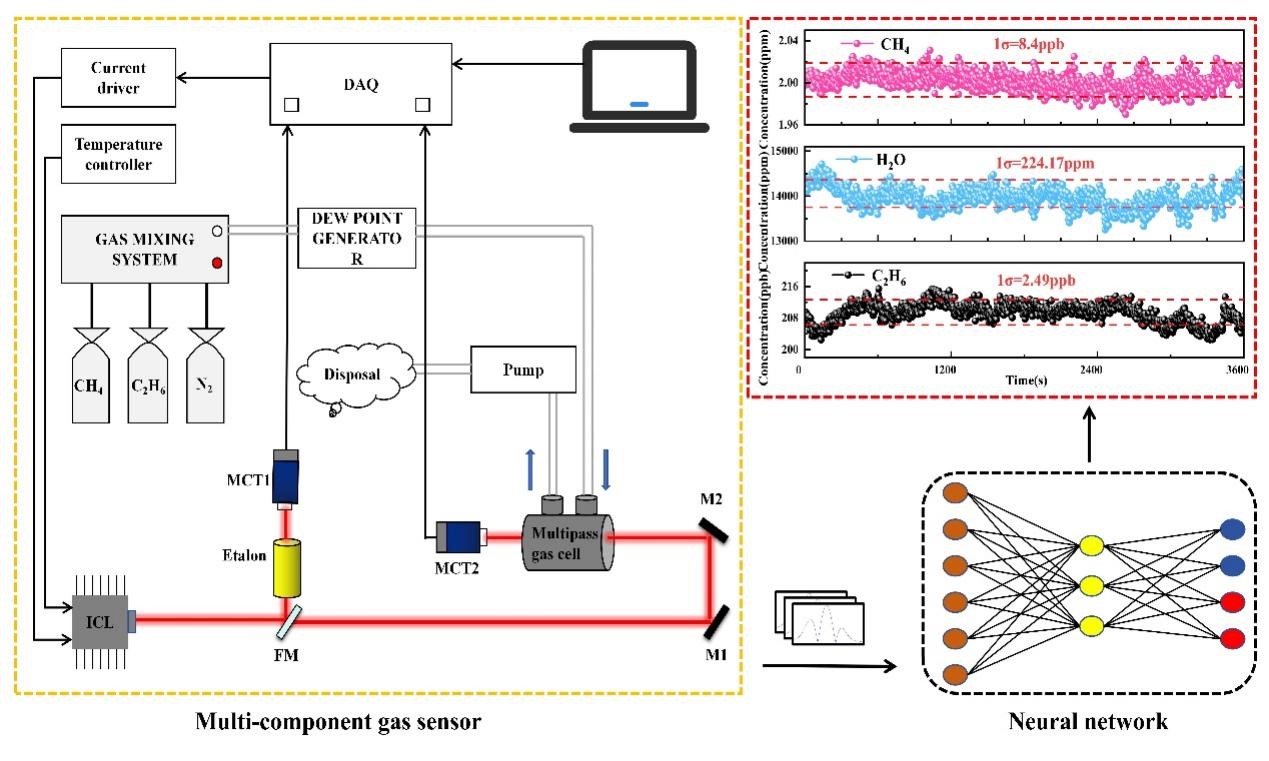
Recently, a research team led by Prof. GAO Xiaoming from the Hefei Institutes of Physical Science of the Chinese Academy of Sciences, developed an intelligent neural network algorithm that effectively tackled the long-standing issue of cross-interference in gas absorption spectra.
“This neural network algorithm made it way easier and more reliable to detect multiple gases at the same time,” said Prof. GAO.
The research results were published in ACS Sensors.
Tunable Diode Laser Absorption Spectroscopy (TDLAS) technology holds significant potential for greenhouse gas detection, owing to its advantages of non-contact, real-time measurements. However, the technical bottleneck of cross-interference in gas absorption spectra has significantly constrained the development and application of this technique for the simultaneous measurement of multi-component gases. A neural network-based decoupling algorithm for aliased spectra offers a low-cost, low-complexity solution to this challenge.
In this study, the researchers first determined the optimal modulation depth under controlled laboratory conditions and generated a large dataset of aliased spectra to train the neural network. This extensive training improved the model’s ability to generalize across different conditions. They also collected experimental data to fine-tune the model and validate its effectiveness.
The beauty of this new method lies in its simplicity: it requires no additional hardware. By using a neural network-based decoupling algorithm, the team was able to resolve spectral interference within the existing system, reducing both the complexity and cost of the design. The algorithm not only decouples multi-component gas signals with high accuracy and stability but also adapts well to complex environments, thanks to transfer learning. It even allows for the simultaneous detection of multiple gases using a single laser, making the process more efficient.
This study highlights the strong potential of neural networks for separating aliased spectra, providing valuable insights for implementing TDLAS gas detection systems in challenging environments.

Schematic diagram of TDLAS gas detection system with integrated neural network decoupling algorithm for aliasing spectra (Image by XIONG Hao)